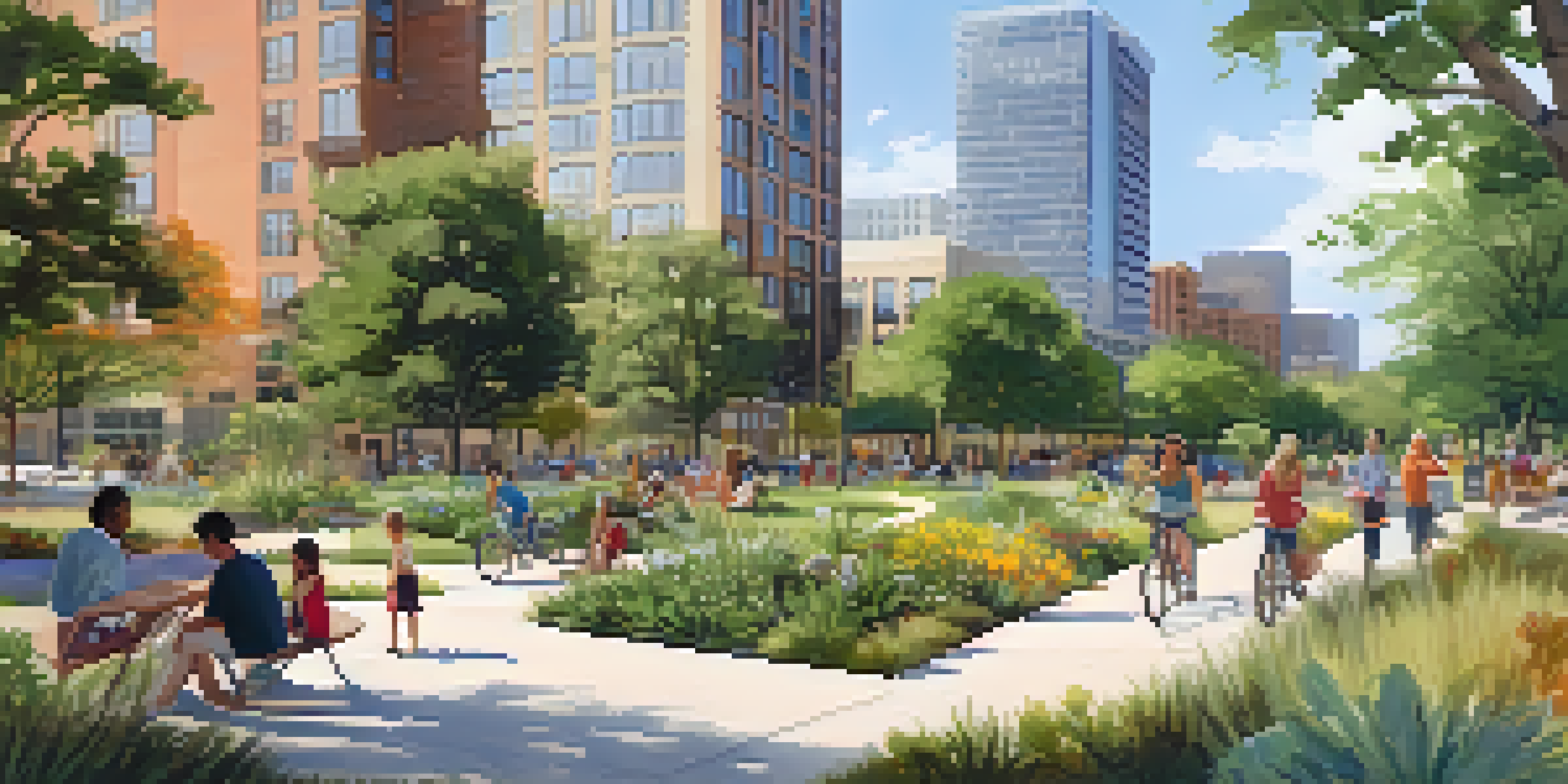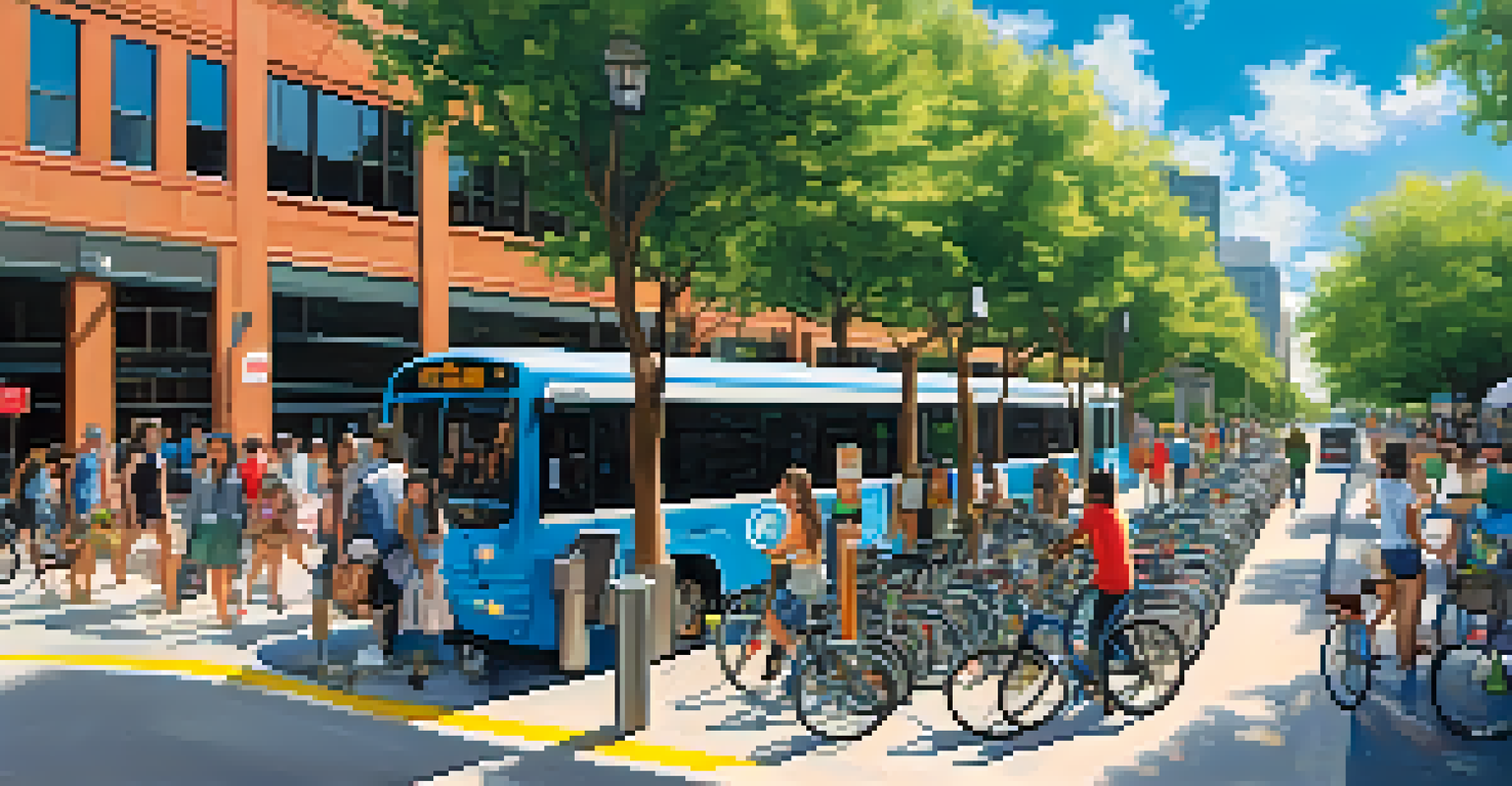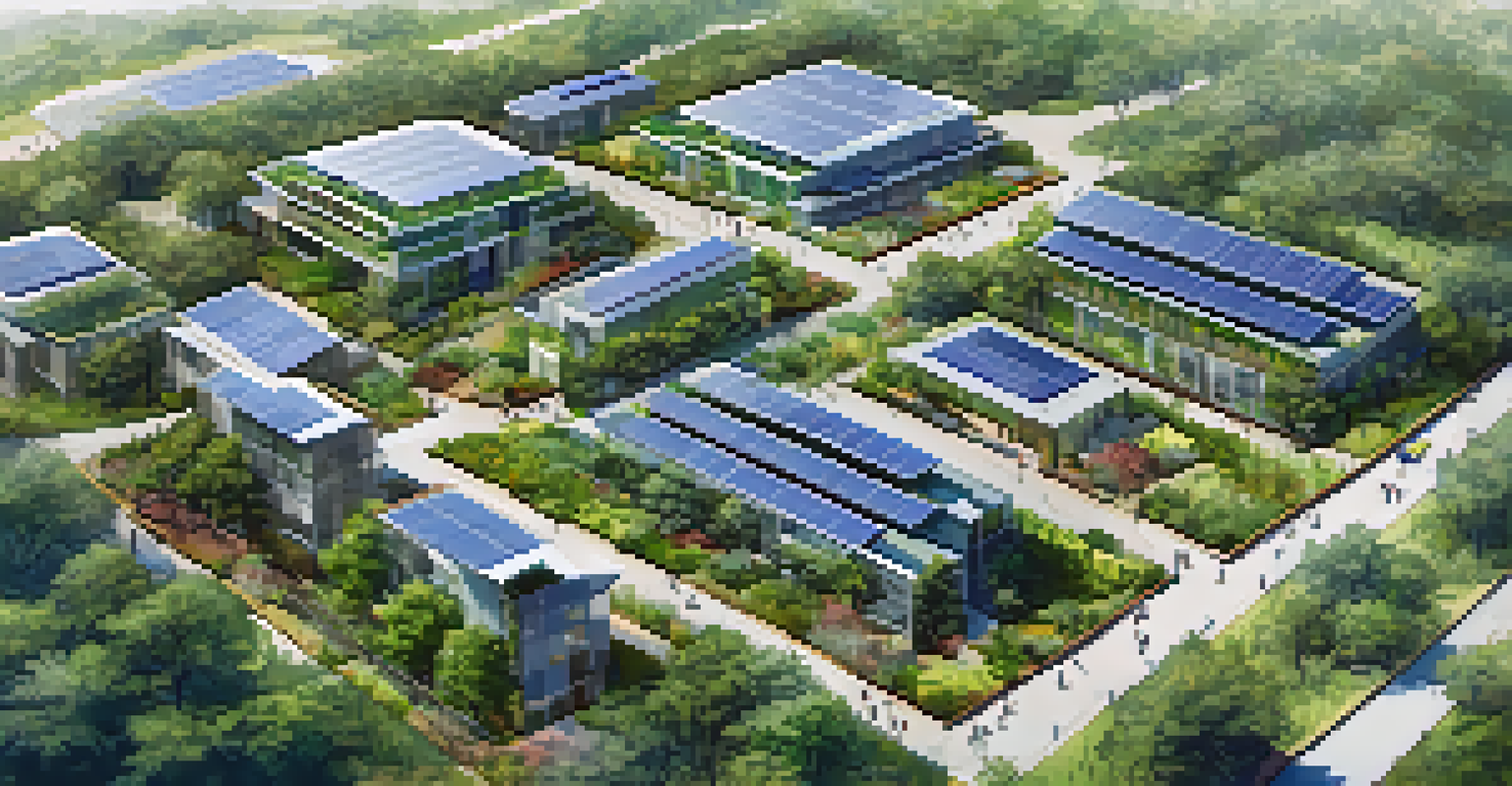Sustainable Practices in Austin's Urban Development Future

The Importance of Sustainable Urban Development in Austin
Austin, known for its vibrant culture and music scene, is also a city grappling with rapid growth. As more people flock to this Texas gem, the need for sustainable urban development becomes critical. By prioritizing eco-friendly practices, Austin can preserve its natural beauty while accommodating new residents.
Sustainable development is about how we can make things better for people without compromising the ability of future generations to meet their needs.
Sustainable urban development focuses on creating cities that meet present needs without compromising future generations. This means considering environmental impact, resource conservation, and community well-being in every decision made. For Austin, this approach not only benefits the environment but also enhances the quality of life for its residents.
Furthermore, sustainable practices can drive economic growth by attracting businesses and tourism. Companies are increasingly looking to establish themselves in cities that prioritize sustainability, making Austin a prime candidate for new opportunities.
Green Building Initiatives in Austin
One of the most impactful ways Austin is embracing sustainability is through green building initiatives. These guidelines encourage the use of sustainable materials and energy-efficient designs in construction. By focusing on eco-friendly practices, builders can significantly reduce a project's carbon footprint.

The Austin Energy Green Building program is at the forefront of these efforts, providing resources and ratings for residential and commercial projects. This program not only promotes energy efficiency but also enhances the comfort and health of building occupants. Homeowners and developers alike are realizing that investing in green building pays off in the long run.
Sustainable Growth is Essential
Austin's rapid growth necessitates a focus on sustainable urban development to preserve its natural beauty and enhance residents' quality of life.
As more buildings adhere to these standards, the city can reduce its overall energy consumption and greenhouse gas emissions. This shift toward greener construction is a win-win for both the environment and the economy.
Transportation Innovations Supporting Sustainability
Austin's commitment to sustainability extends beyond buildings to its transportation systems. The city is investing in public transit options, bike lanes, and pedestrian-friendly designs to reduce reliance on cars. These innovations not only cut emissions but also promote healthier lifestyles among residents.
The Earth does not belong to us: we belong to the Earth.
The Capital Metropolitan Transportation Authority is working to expand public transit routes, making it easier for residents to choose sustainable travel options. With more people utilizing buses and trains, Austin can alleviate traffic congestion and improve air quality. It's about creating a city where getting around doesn't depend solely on a personal vehicle.
Additionally, bike-sharing programs and expanded cycling infrastructure encourage residents to opt for two wheels instead of four. By fostering a culture of alternative transportation, Austin is paving the way for a greener future.
Integrating Nature into Urban Spaces
A key element of sustainable urban development is the integration of nature into city landscapes. Austin is known for its beautiful parks and outdoor spaces, and there is a growing emphasis on preserving and enhancing these areas. Urban green spaces provide essential benefits, such as improved air quality and increased biodiversity.
The city is implementing initiatives to create more parks, community gardens, and green roofs, making nature accessible to all residents. These spaces encourage community interaction and foster a sense of belonging, while also offering a refuge for local wildlife. It's a reminder that even in an urban setting, nature has a vital role to play.
Green Building Boosts Economy
Green building initiatives in Austin not only reduce carbon footprints but also create healthier living spaces and drive economic growth.
Moreover, incorporating green elements into urban planning can help mitigate the urban heat island effect, making the city cooler and more comfortable. This approach to development highlights the importance of balance between concrete and greenery.
Community Engagement in Sustainable Practices
Building a sustainable city requires active participation from the community. Austin has seen a rise in grassroots movements advocating for greener practices in urban planning and development. Residents are becoming more vocal about their desires for sustainability, ensuring their voices are heard in decision-making processes.
Public forums, workshops, and social media platforms provide spaces for community members to share ideas and concerns about urban development. This collaborative approach not only empowers residents but also fosters a sense of ownership over the city's future. Engaging the community ensures that development aligns with their values and needs.
By working together, Austin residents can drive meaningful change that reflects their priorities. This sense of collective responsibility is vital for creating a city that thrives sustainably.
Water Conservation Strategies in Urban Planning
Water conservation is a critical aspect of sustainable urban development, especially in a city like Austin, which faces occasional droughts. The city is implementing strategies to manage water resources more effectively, ensuring that both residents and businesses can thrive. This approach includes rainwater harvesting, xeriscaping, and the use of drought-resistant plants.
Programs aimed at educating residents about water conservation practices are also gaining traction. By encouraging homeowners to adopt water-saving methods, the city can significantly reduce overall consumption. Simple actions like installing low-flow fixtures or collecting rainwater can make a substantial difference.
Community Engagement Matters
Active community involvement in sustainable practices ensures that urban development aligns with residents' needs and values.
Additionally, integrating these water conservation techniques into urban planning helps create a resilient city. By prioritizing sustainable water management, Austin can safeguard its water supply for future generations.
The Role of Renewable Energy in Austin's Future
Renewable energy is at the heart of Austin's sustainable future, with the city taking significant steps toward reducing its reliance on fossil fuels. The Austin Energy initiative emphasizes solar, wind, and other renewable resources to power homes and businesses. This shift not only supports the environment but also creates job opportunities in the growing green energy sector.
By investing in renewable energy infrastructure, Austin is paving the way for a more resilient energy grid. These investments help protect the city from fluctuating energy costs and enhance energy security. As technology advances, the potential for even greater energy efficiency continues to grow.

Furthermore, the commitment to renewable energy aligns with Austin's goals for a sustainable urban landscape. By prioritizing clean energy sources, the city can meet its climate goals while fostering economic growth.